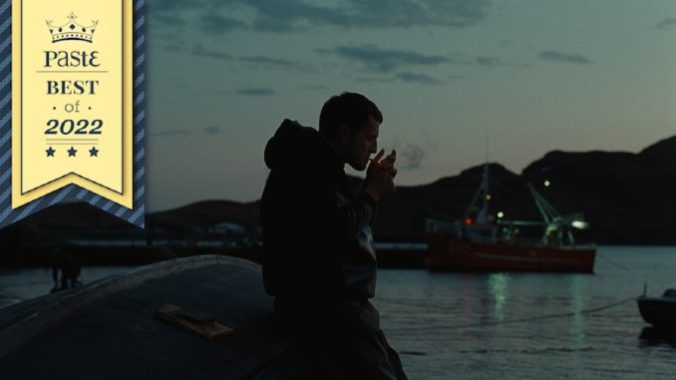The Best Movies of the Year: God’s Creatures and the Balance of Nature

We breach the water gasping for air at the start of God’s Creatures. A distant dog barks, alerted to our intrusion. Nature sounds the alarm.
After this flooded prologue, Saela Davis and Anna Rose Holmer’s film introduces us to the women of the fishery on a small Irish island. More than friends and coworkers, these women are comrades, working together to help each other get by. What happens to one affects them all.
When Aileen O’Hara’s (Emily Watson) estranged son Brian (Paul Mescal) returns home from feckin’ off to Australia like, the tides begin to change. Things are tense at home from the start. To get Brian back on his feet, Aileen has to steal resources from her job, resources he only squanders. Brian starts poaching. Unaccustomed to life on the island, he nearly gets swept away by the demands of the fishing trade. Still, he’s hopeful his luck will change by rekindling things with his teenage crush Sarah (Aisling Franciosi), who works with his mom at the factory.
One morning after a night out at the pub, Sarah comes into work looking distraught. She’s shrunken into herself, barely composed. As she takes her usual place at the far end of the factory floor, the camera creeps past the other ladies going about their day. Inching closer, sounds of hyperventilation change the rhythm of Danny Bensi and Saunder Jurriaans’ otherwise languid score. An interruption—something’s not right. A coworker breaks Aileen’s scrutiny to inform her that she’s found a fungus in the oysters she’s sorting. Soon other women confirm that they also detect it in their crops. They will need to destroy their yield and put a moratorium on harvesting oysters until the fungus has cleared, effectively bringing the island economy to a standstill. Like the dog in the prologue, the dying oysters portend an intrusion surfacing.
As the island reels from the loss of income, Sarah files rape charges against Brian. Davis and Holmer haven’t shown us anything from that night, just Sarah’s sudden change and her shudder at Aileen’s touch. Most people seem inclined to think Brian did it, but Aileen just got her son back. She doesn’t want to believe he would commit such a violation, nor risk losing him again. Though the judge dismisses the case for lack of evidence, a riptide of events force Aileen to reconsider the depths of her convictions.
-

-

-

-

-

-

-

-

-

-

-

-

-

-

-

-

-

-

-

-

-

-

-

-

-

-

-

-

-

-

-

-

-

-

-

-

-

-

-

-








































